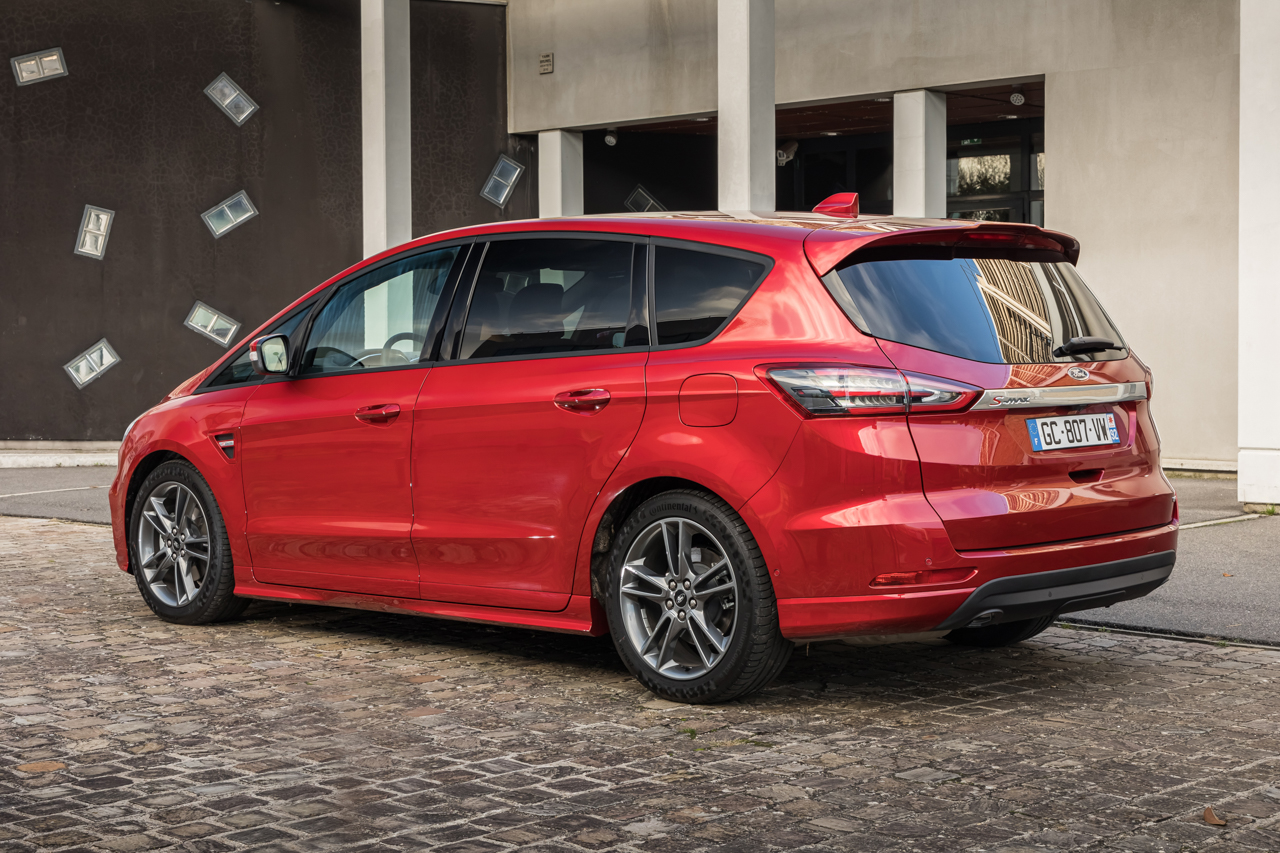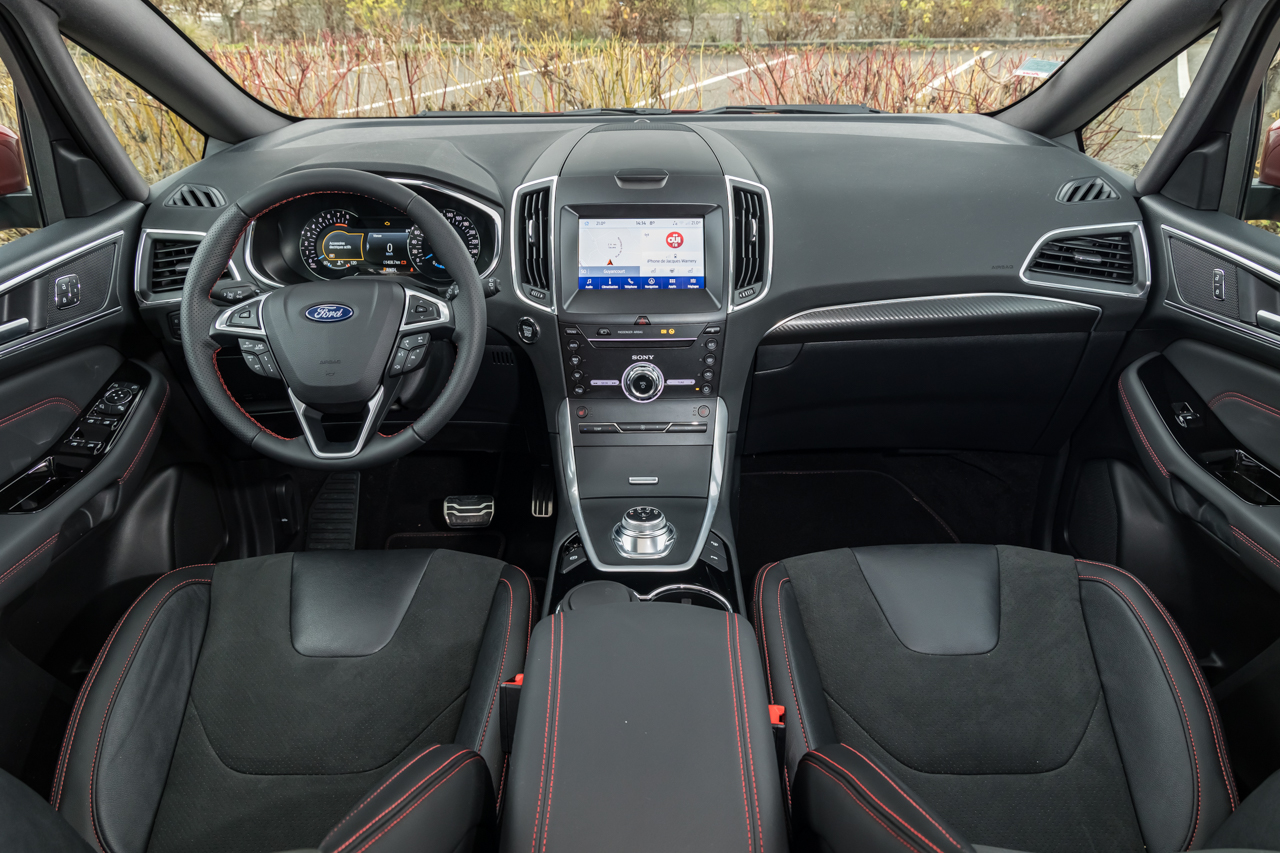
The Ford S-Max becomes the first large MPV to offer gasoline hybridization. By the way, he reminds fans of space on board that the family virtues are on his side and not on the side of SUVs.
Test car: Ford S-MAX Hybrid ST-Line
|
From€ 47,550
€ 740 penalty
|
Formerly rented by families, large MPVs have now fallen into disuse, replaced by large SUVs which are more attractive on the outside but less spacious on the inside. Ford remains one of the rare manufacturers to occupy this deserted ground with its younger S-Max, seven years of existence, but still dynamic in appearance. For its home stretch, the S-Max is cleaning up its range: exit the diesel and hello the gasoline hybrid. A necessary shift at a time when diesel is increasingly constrained by legislation and stunned by the penalty. For lovers of interior space, this S-Max sounds like a godsend, but what about its consumption?
Ford S-Max Hybrid Price

Since the two TDCI 150 and 190 hp diesels left the catalog, the Ford S-Max is therefore only available as a gasoline hybrid. This does not prevent it from suffering the ecological penalty (€ 740 to € 1,276 depending on the equipment). This hybrid minivan must also pay the new weight penalty, in effect since January 1, 2022 for vehicles over 1,800 kg and that amounts to € 1,470 here. The Ford is available in three finishes: Titanium Business (€ 45,750) which already includes the essentials (see table on the next page), ST-Line with sporty presentation (€ 47,550) which is the model pictured and Vignale (54,250 €) which offers luxurious services with large leather reinforcements.
Driving
The driving position slightly less dominant than that of an SUV, the panoramic windshield and the dashboard studded with buttons send back a good decade back to the days of large MPVs. In this gently outdated atmosphere, the S-Max is calming and it stands out from its rare fellows by its hybrid system. The latter cumulates 150 hp 2.5 four-cylinder petrol engine operating in Atkinson cycle, an electric motor of 40 hp, a small battery of 1.1 kWh and a CVT type box.

Similar to the one used by Toyota, this set brings an incomparable softness, particularly appreciable in the city. The battery is recharged during deceleration and during braking which here lacks a little naturalness and sometimes requires adding more before coming to a complete stop. Its low capacity limits evolutions in silence to a couple of kilometers, but the awakening of the four-cylinder is particularly discreet. In this padded universe, only the hectic damping generated by the sport chassis of this ST Line version disturbs the tranquility of the passengers. The optional 19-inch rims don’t help. In a cramped urban environment, the generous dimensions and the imposing turning radius do not facilitate evolutions, but the Ford has shown great sobriety, around 6 l / 100 km.
The S-Max Hybrid retains its superb over long journeys and eliminates the typical defect of CVT transmissions, generally noisy at the time of requesting the mechanics. The box which here simulates gear changes also has the good taste of lowering the engine speed on the motorway. As a result, the practically inaudible purring of the mechanics is covered by slight aerodynamic noises and the large Ford MPV spares the ears of its occupants. Under these conditions, the values of 6.6 l / 100 km on the on-board computer at 130 km / h on the motorway remain optimistic. Count around 8 l / 100 km in real life. A diesel is certainly better, but gasoline of comparable powers are on the other hand more greedy. Too bad this hybrid S-Max does not run on E85 like the very last Kuga hybrid.


The 190 hp cumulative of the non-rechargeable hybrid propulsion may be less impressive than on the technical sheet, but the performance is more than sufficient even under load. The mechanical availability makes it possible to avoid making it “reel” for too long when it comes time to revive itself energetically. Equipped with the sports chassis fitted as standard on this ST Line finish, the S-Max swallows more sinuous curves and turns at a surprisingly sustained pace. Precise and then perfectly mastering its cash movements, it takes advantage of its high grip to show itself much more dynamic than family SUVs, despite uninformative management. On the other hand, lovers of comfort will prefer to opt for the other finishes (Titanium Business and Vignale), in order to benefit from softer cushioning and softer upholstery.
On board





Competetion
Since the retirement of the Seat Alhambra and other Volkswagen Sharans, large MPVs have become increasingly rare. The Renault Espace, which will leave the catalog in 2022, occupies the field by drawing from the crossovers a subtly increased ground clearance. Unavailable in gasoline hybrid, the French offers two diesels of 150 and 190 hp in the catalog. More technological and comfortable than the S-Max, it is however a little less welcoming for luggage and its prices rise: from € 47,500 to € 59,300.
The other competitor comes from within and is called Ford Galaxy. Based on the same basis and only available with the same hybrid engine, it loses in style what it gains in interior space. Longer by 3 cm and higher from 9 to 11 cm, the largest of the minivans adorned with the blue oval increases its carrying capacity to respectively 300, 1,301 and 2,339 l in configuration seven, five or two places. Its unique Titanium Business finish costs € 50,950.
Find the test report, the technical sheet and the equipment on the next page.

















